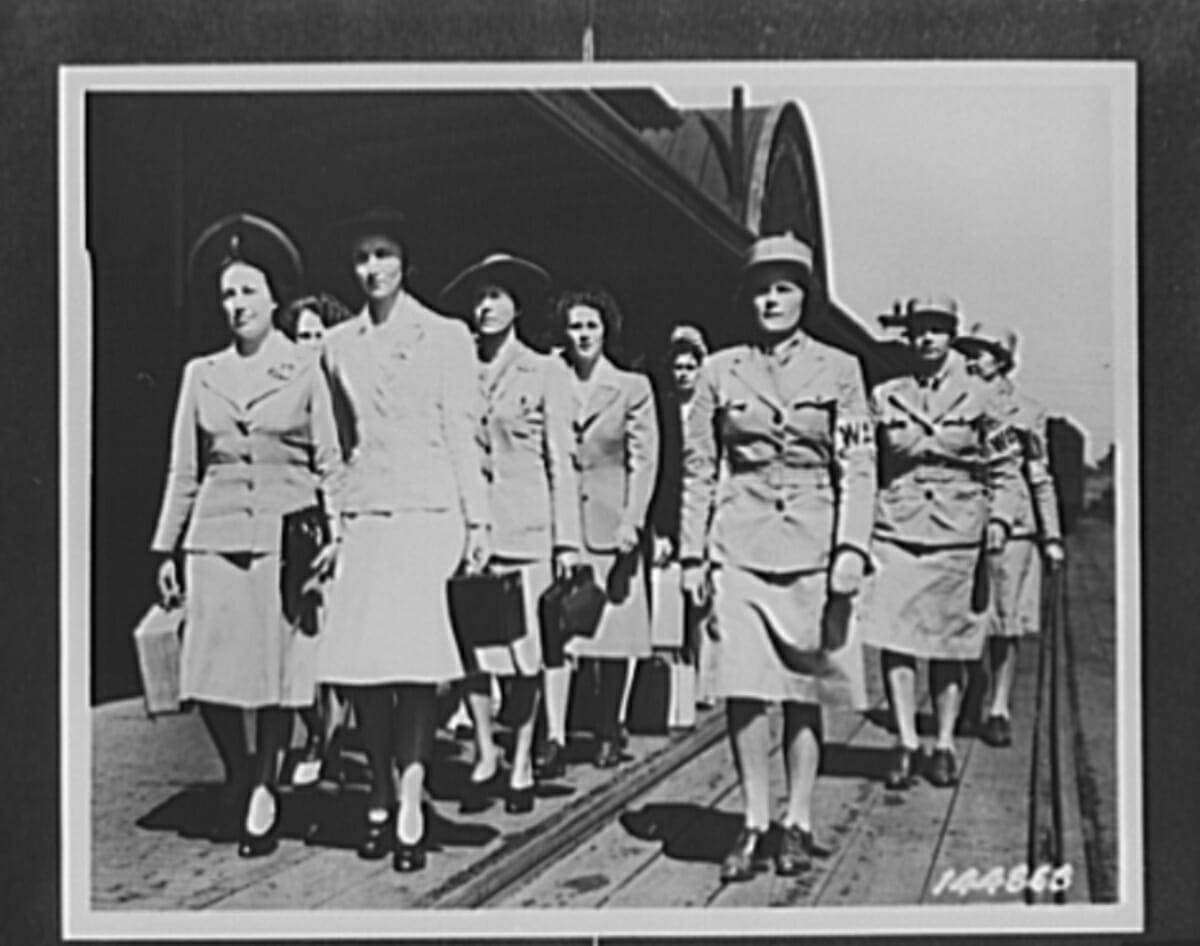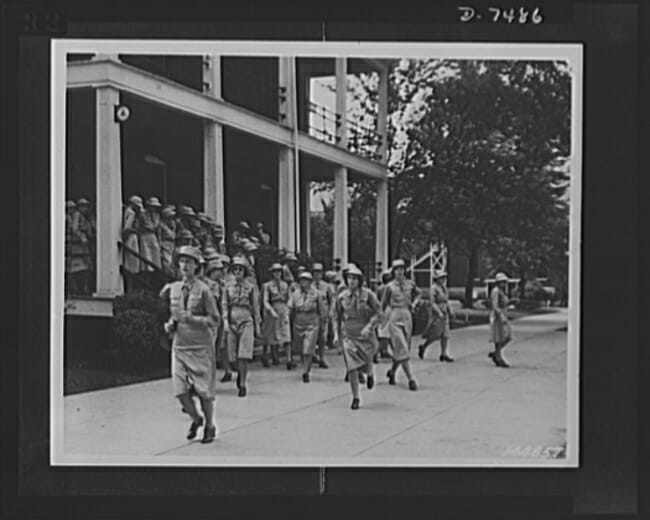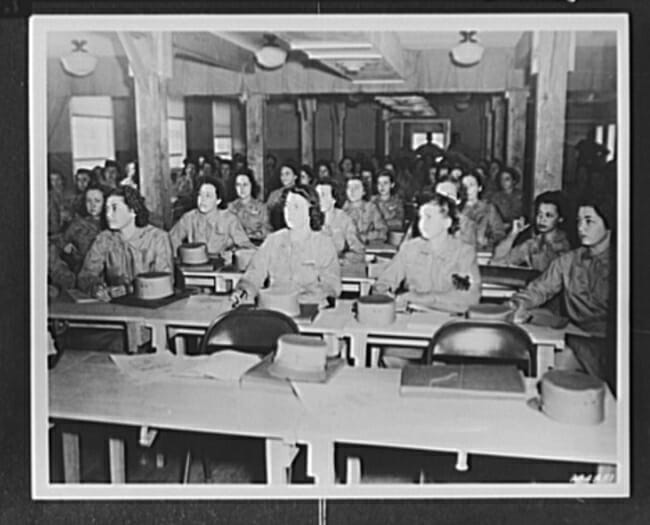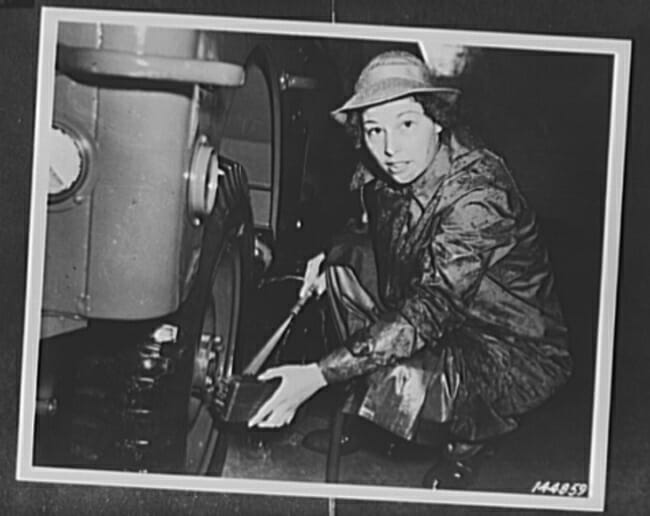

Uh oh...
It appears that you're using a severely outdated version of Safari on Windows. Many features won't work correctly, and functionality can't be guaranteed. Please try viewing this website in Edge, Mozilla, Chrome, or another modern browser. Sorry for any inconvenience this may have caused!
Read More about this safari issue.

In 1941, much of Europe had already been mired in war for two years. The United States was wary of becoming involved, but as the situation deteriorated, public opinion began to shift. Germany took France in 1940 and began bombing Great Britain. By 1941, 68% of Americans favored entering the war in an effort to help the Allies. That was a much higher percentage than in the previous two years. It looked like the United States would soon join World War II, and one woman wanted to make sure that the women who were included in the war efforts were not forgotten.

Edith Rogers served in World War I as a “gray lady” for the American Red Cross. These were volunteers who served in hospitals, clinics and other health centers during World War I performing non-medical services such as reading lessons, letter writing, hospitality and more. Rogers volunteered while her husband, U.S. Congressman John Rogers, spent time in France and Great Britain in his role on the House Foreign Affairs Committee. While abroad, Edith Rogers observed that many British women were paid by the British Army for the roles they performed, while American women were volunteering these same services without pay or benefits. It left an impression on her. Over 20 years later, Rogers was in a position to shift the fortunes of thousands of American women as the U.S. sat on the brink of war.
Congressman John Rogers died in the middle of his seventh term in 1925. Edith Rogers ran for the seat in a special election and won. Rogers began her first of 18 consecutive terms in the House. In May of 1941, the congresswoman from Massachusetts was determined to position American women well for the impending war. She put forth House Resolution 6293: a bill to establish a women’s army auxiliary corps, in May 1941. She proposed the women’s auxiliary be part of the U.S. Army, and that its volunteers should be paid the same as their male counterparts and receive the same benefits.

The bill wasn’t passed until after the U.S. was attacked at Pearl Harbor in December of that year. In May 1942, Rogers’ bill finally gained approval after support from First Lady Eleanor Roosevelt and General George Marshall. The bill was signed into law on May 14, 1942, nearly a year after Rogers’ initial proposal.
Oveta Culp Hobby was chosen to lead the newly established Women’s Army Auxiliary Corps (WAAC). Hobby was already working for the Women’s Interest Section in the War Department Bureau of Public Relations. She had already done research on the many ways women could serve in a war, including building off how women volunteered in World War I. After she took the reins, the WAAC opened a training center at Fort Des Moines, Iowa.
The first Arkansas woman accepted for officer training at the fort was Little Rock’s Margaret Letzig. Letzig was married and 43 when she volunteered, with a daughter in college, a son in his last year of high school, and a husband who worked at Pine Bluff Arsenal. Letzig entered WAAC officer training on July 20, 1942, as part of a group of 200 officer trainees plus 400 basic trainees. Over 35,000 women across the country applied for these first spots in the WAAC.

The women attended an eight-week training session where they encountered many of the same training situations as their male counterparts, including exercise, drills, and classes on military subjects. The women did not have weapons training. The mission of the WAAC was to replace male soldiers in non-combat roles to free these male soldiers for combat duty. The first group of women trainees was successful. The women were assigned roles from clerical and administrative duty to mechanical duty and even intelligence.
The WAAC opened other training camps with the goal of training 25,000 women. By the end of the war, over 150,000 women had volunteered and served in the WAAC. To train so many women, other camps opened, including Camp Monticello in Drew County, Arkansas. Camp Monticello was actually a POW camp, but the women used it from March 1943 until June of that same year. By then, the camp was needed to hold POWs, and the WAAC was forced to vacate. Other WAAC camps were located in Florida, Georgia, Louisiana and Massachusetts.

The first overseas deployment of WAAC volunteers was the 149th WAAC Post Headquarters Company. They served in North Africa under General Eisenhower as clerks, administrators, switchboard operators, and typists. As the war continued, roles continued to open up for WAAC women. By the end, women were performing over 400 different jobs in the Army. With overseas deployment came the recognition that even though WAAC volunteers were paid, they didn’t receive the same overseas benefits as their male counterparts. Congresswoman Rogers stepped in again with a bill to allow women some of the same benefits and equal pay, although these women never received veteran’s benefits. The bill also changed the position of the WAAC from an auxiliary group to full status within the Army. The group dropped the extra A and became the Women’s Army Corps (WAC).
In Arkansas, a separate recruitment office for the WAC existed in Little Rock with recruitment quotas for each county. In addition to the training camp at Camp Monticello, two “paper schools” opened at Arkansas Polytechnic College (Arkansas Tech) and Arkansas State Teachers College (UCA). Recruits in these two programs were trained in how to complete army forms and in army administration. These two schools alone trained 3,000 recruits.
Although many women were eager to serve, recruitment wasn’t always easy. Many women didn’t even work outside their homes at this time, and the army remained a male-dominated sphere. As women began to take jobs left open by men who joined the war, the WAC struggled to keep up with their recruiting efforts. Still, the WAC continued to support all manner of positions, including weather forecasters, sheet metal workers, mechanics, and some even trained as dental and lab technicians. Some of these techs trained at the Army and Navy General Hospital in Hot Springs. WACs also served at Arkansas military bases Camp Robinson, Fort Chaffee, and the Pine Bluff Arsenal.

When World War II ended in 1945, 99,000 women were serving in the army. The WAC continued to exist after the war, and women served in Korea and Vietnam. In 1978, the WAC officially ended as women joined their male counterparts in the army and served together. Although the organization no longer existed, the women that served in the Women’s Army Auxiliary Corps, including many Arkansans and those who came to Arkansas for training, proved women were able to serve in the armed forces.
To learn more about the Women’s Army Auxiliary Corps, visit the United States Army Women’s Museum website or plan a visit to the museum located at Fort Lee, Virginia. Read more about Arkansas women who served in the WAC at the Encyclopedia of Arkansas.
WAAC photos courtesy of the Library of Congress
We do the work.
You check your email.
Sign up for our weekly e-news.
Get stories sent straight to your inbox!







Like this story? Read more from Kimberly Mitchell
When Only in Arkansas launched in 2014, I was just testing my chops as a...
When the founders of PerspectAbility met for the first time over coffee,...
In February of 2022, Caroline and Aaron Hopper received the news no...
Join the Conversation
Leave a Comment